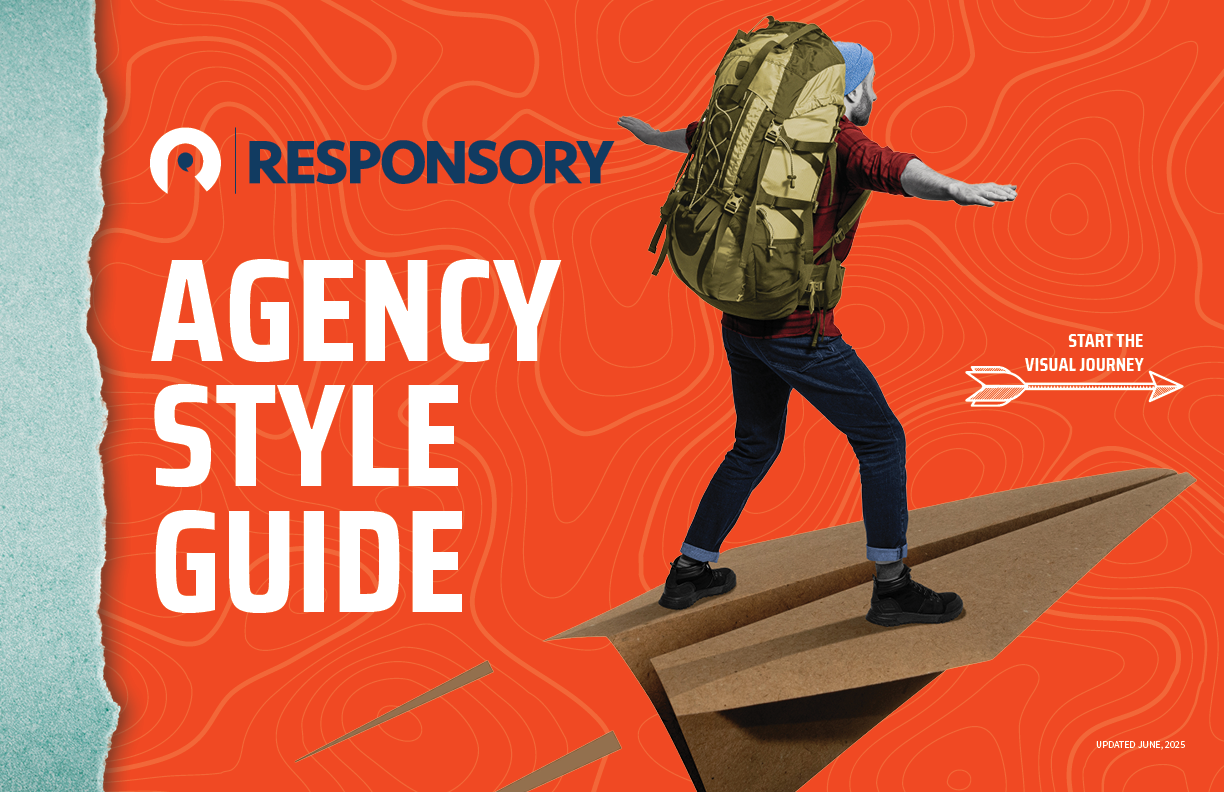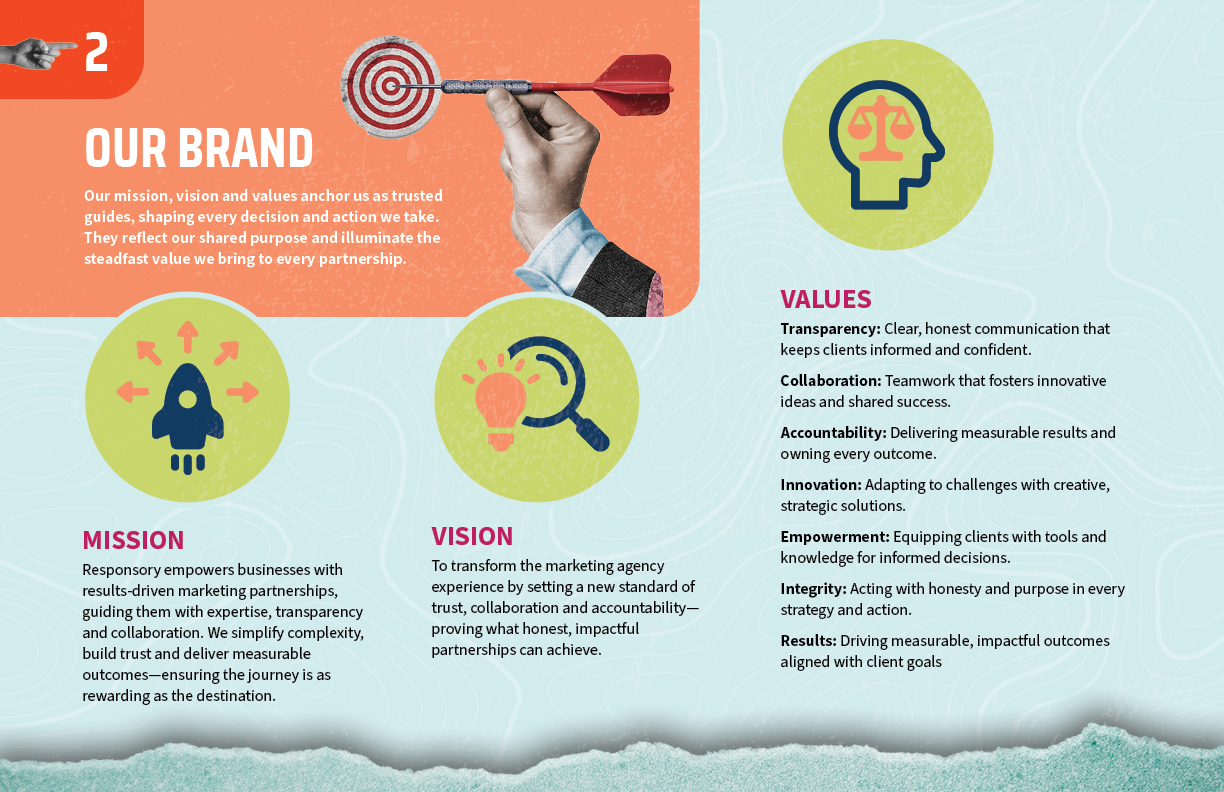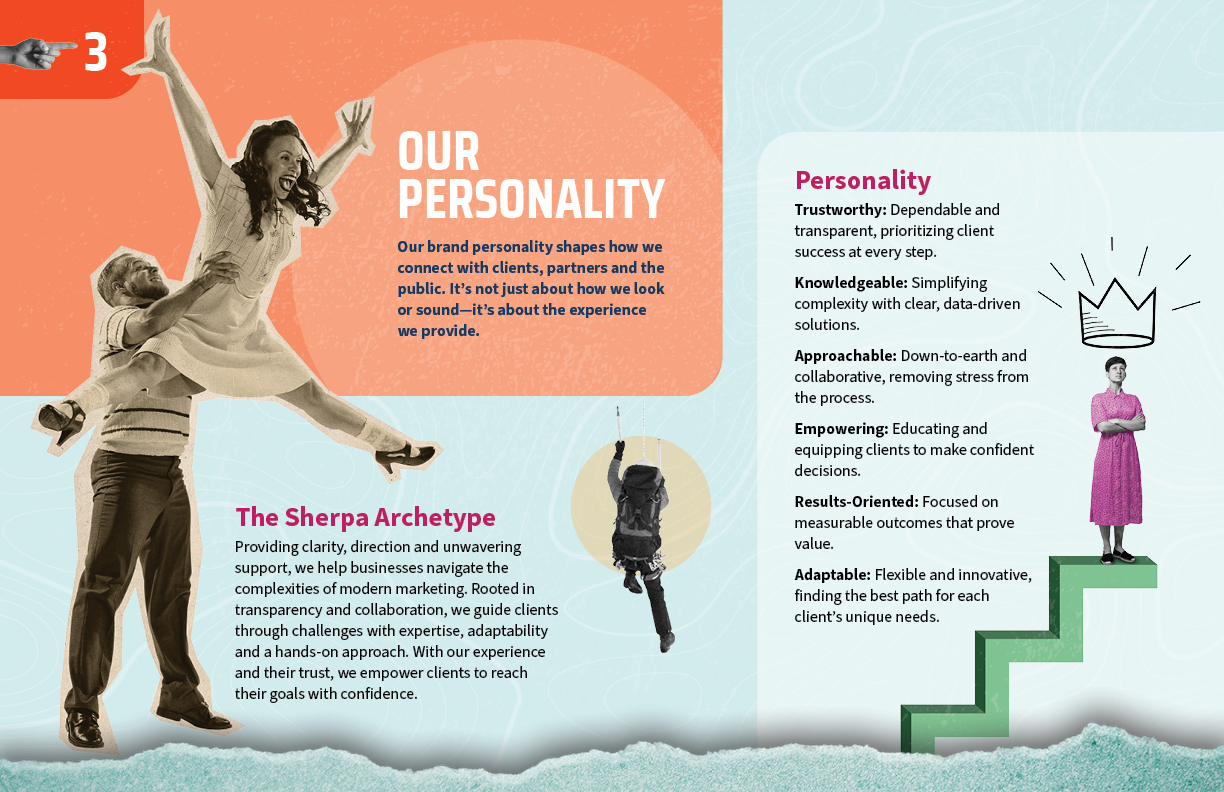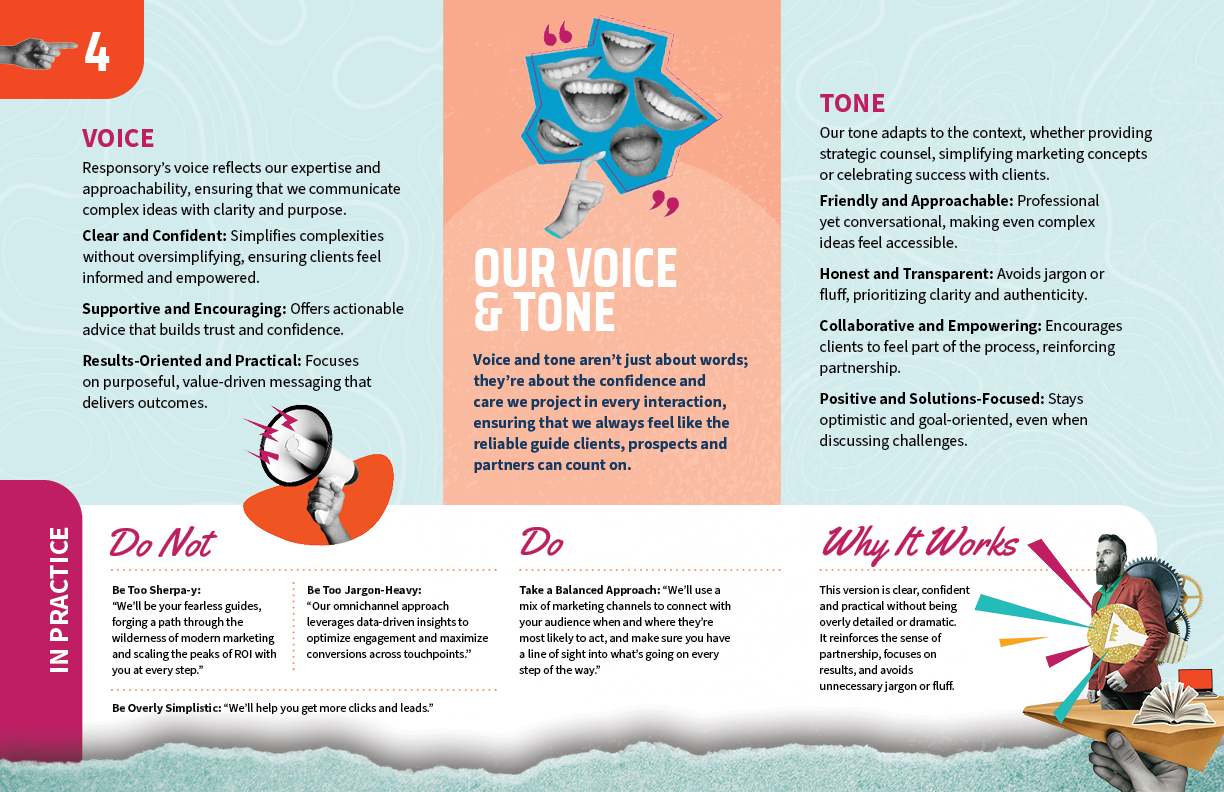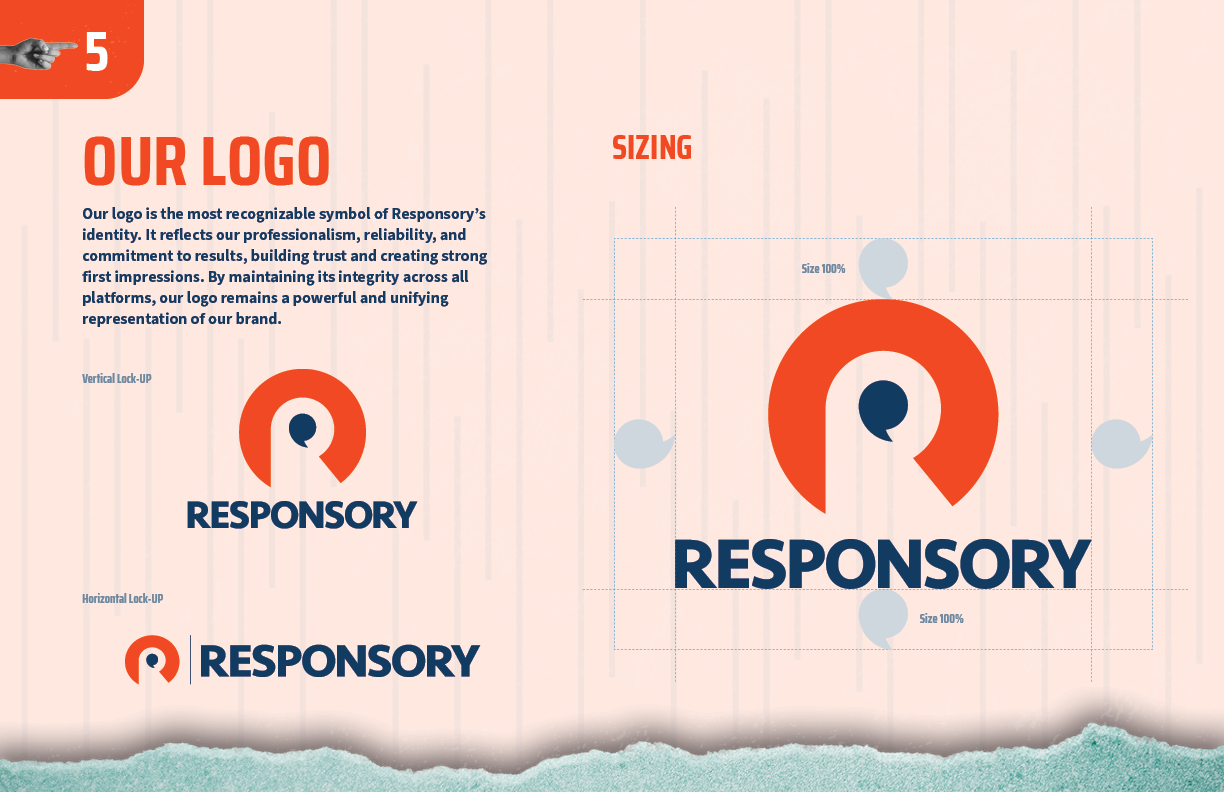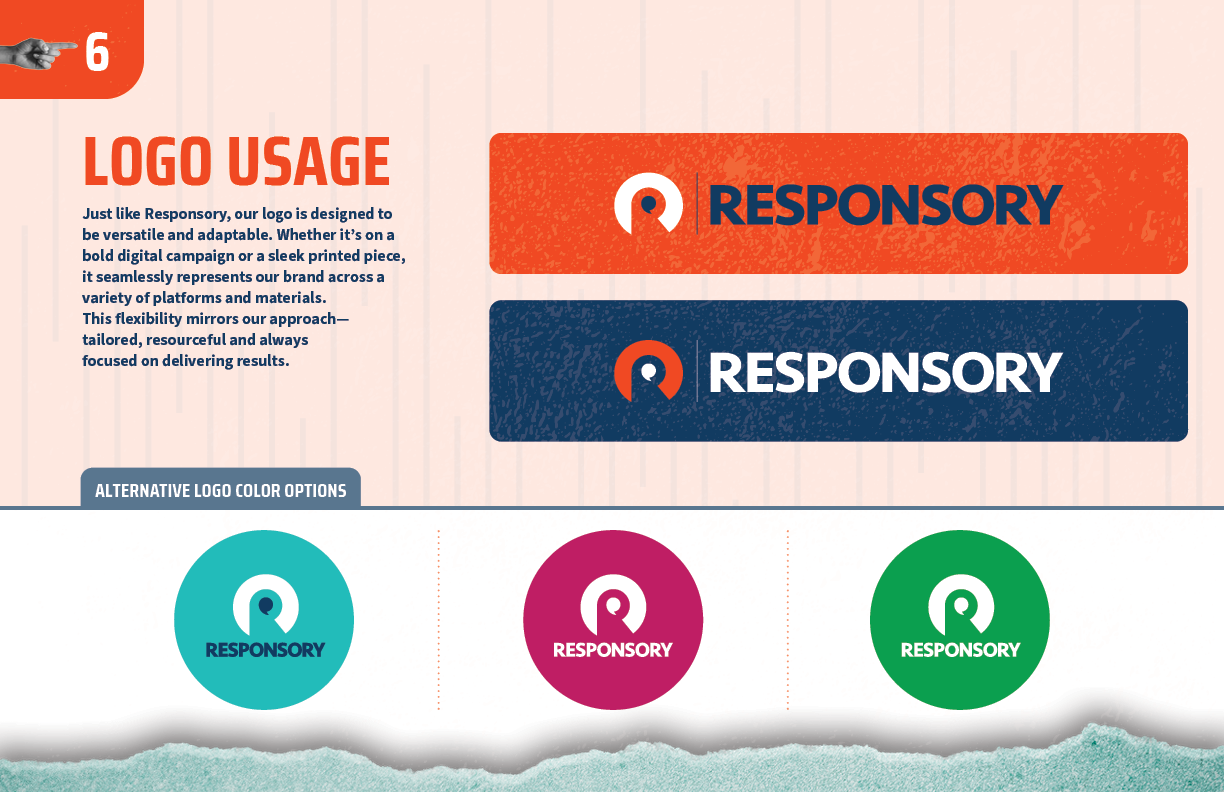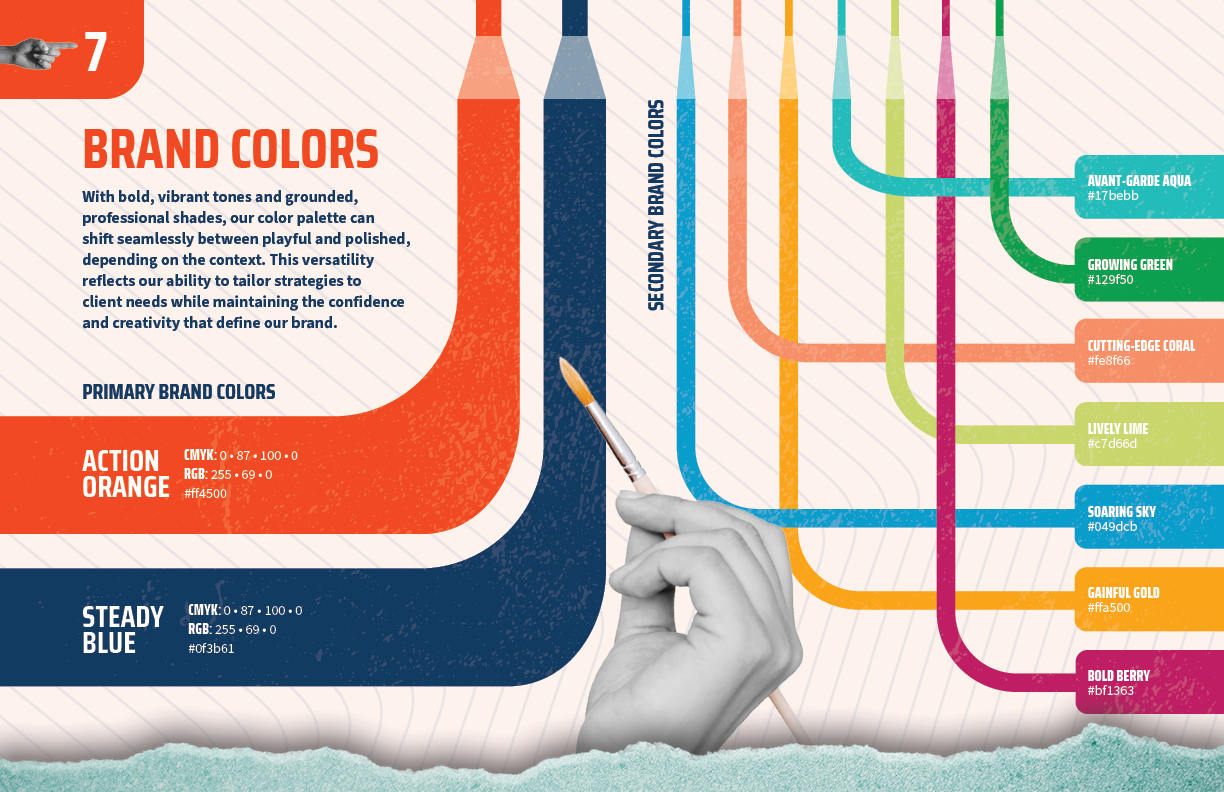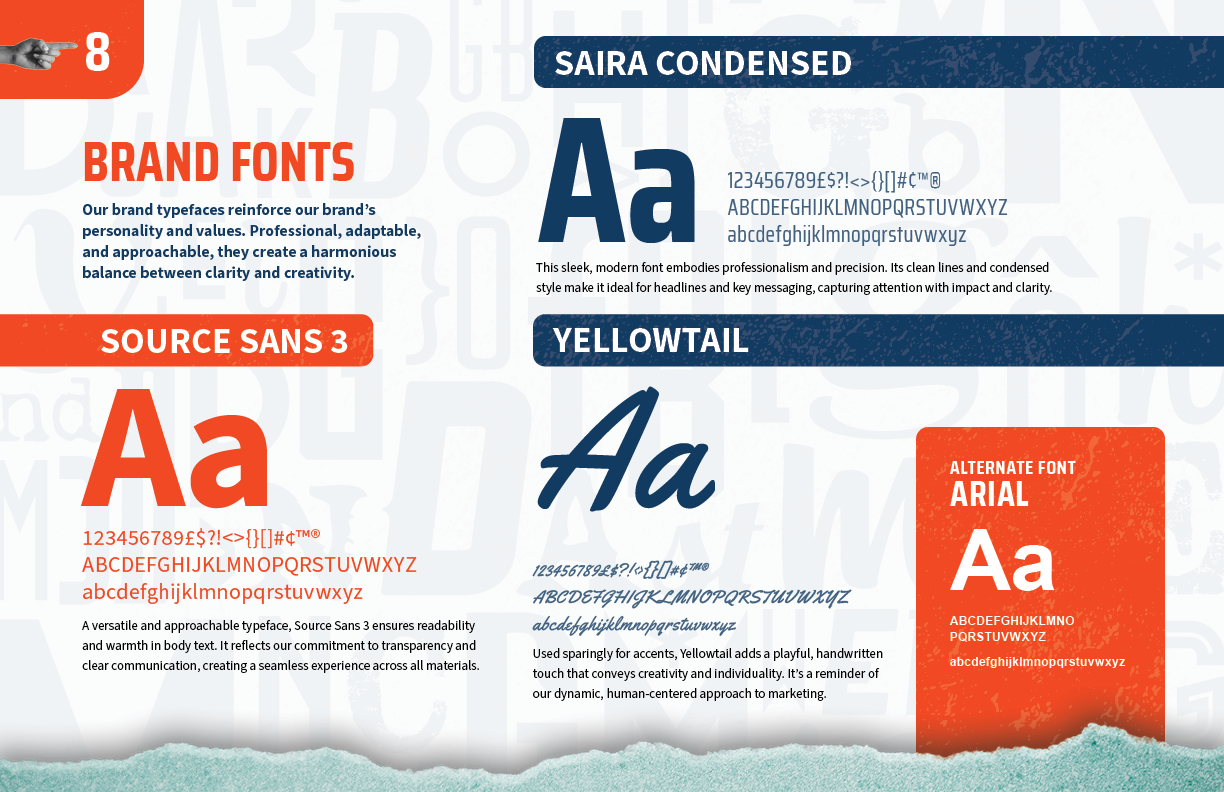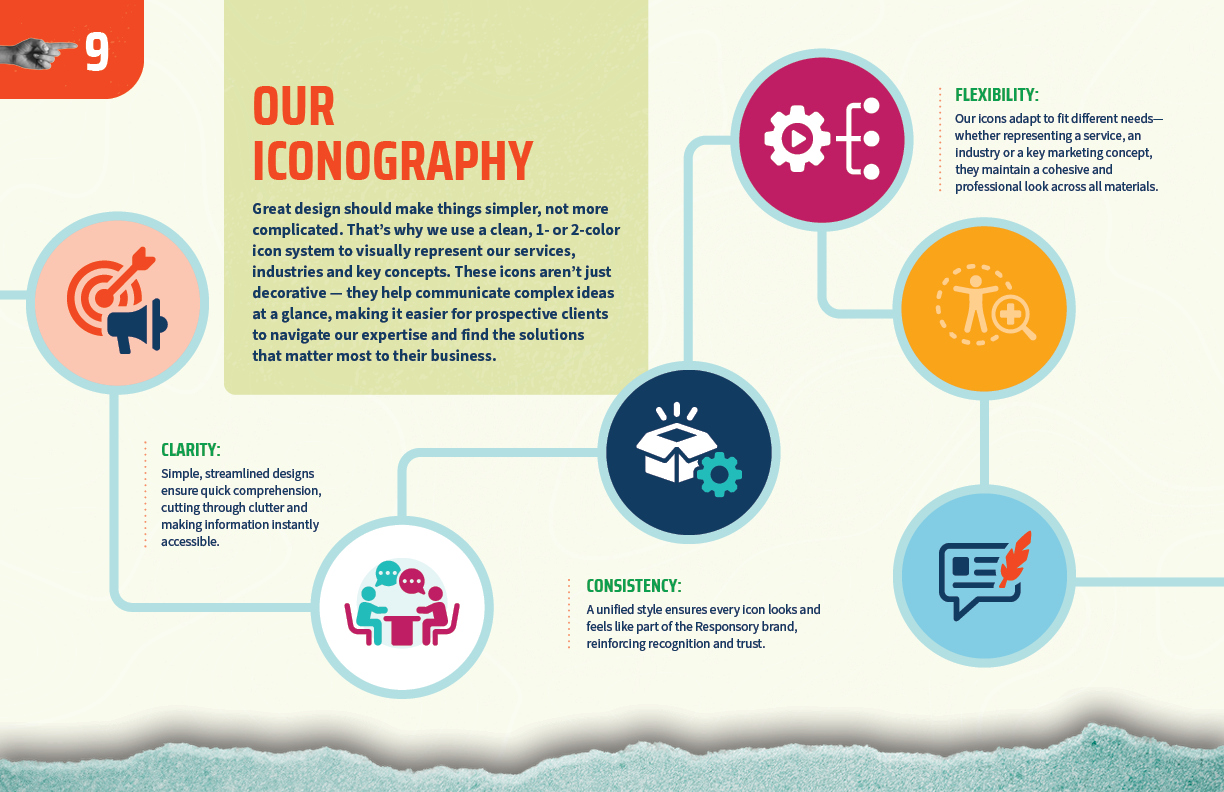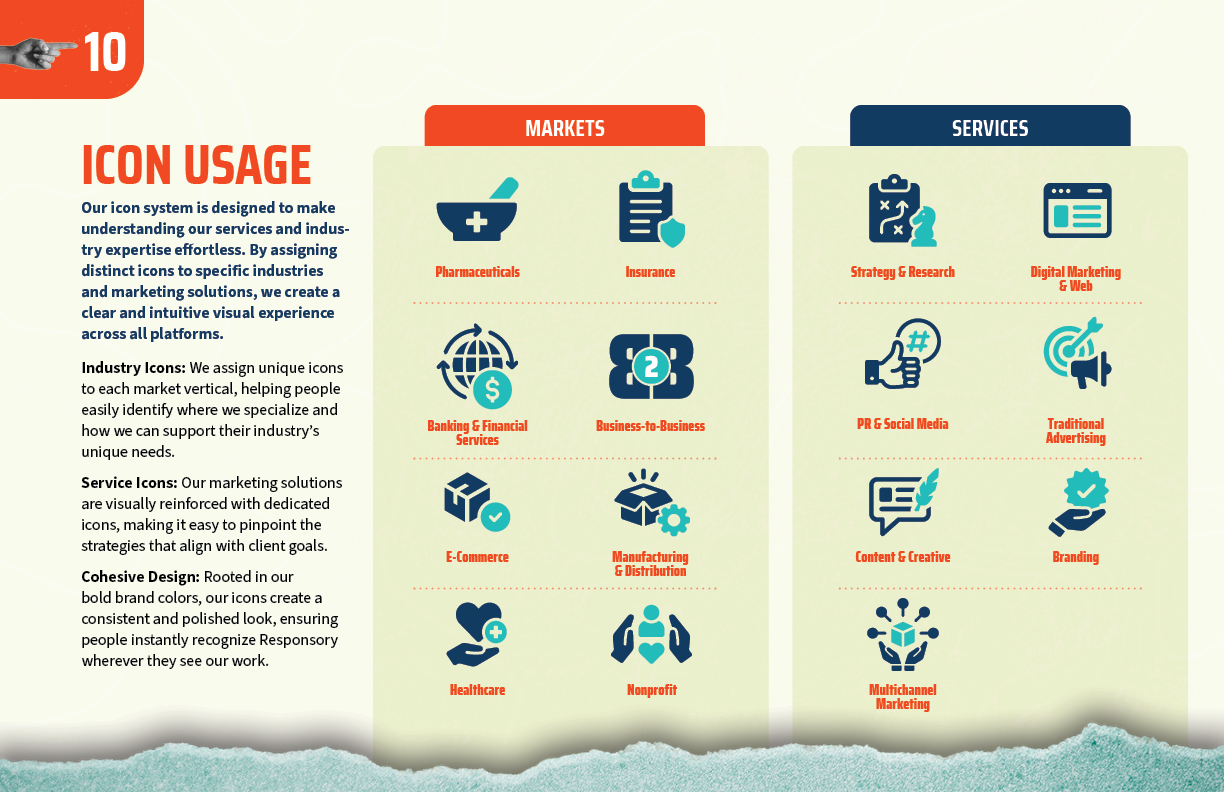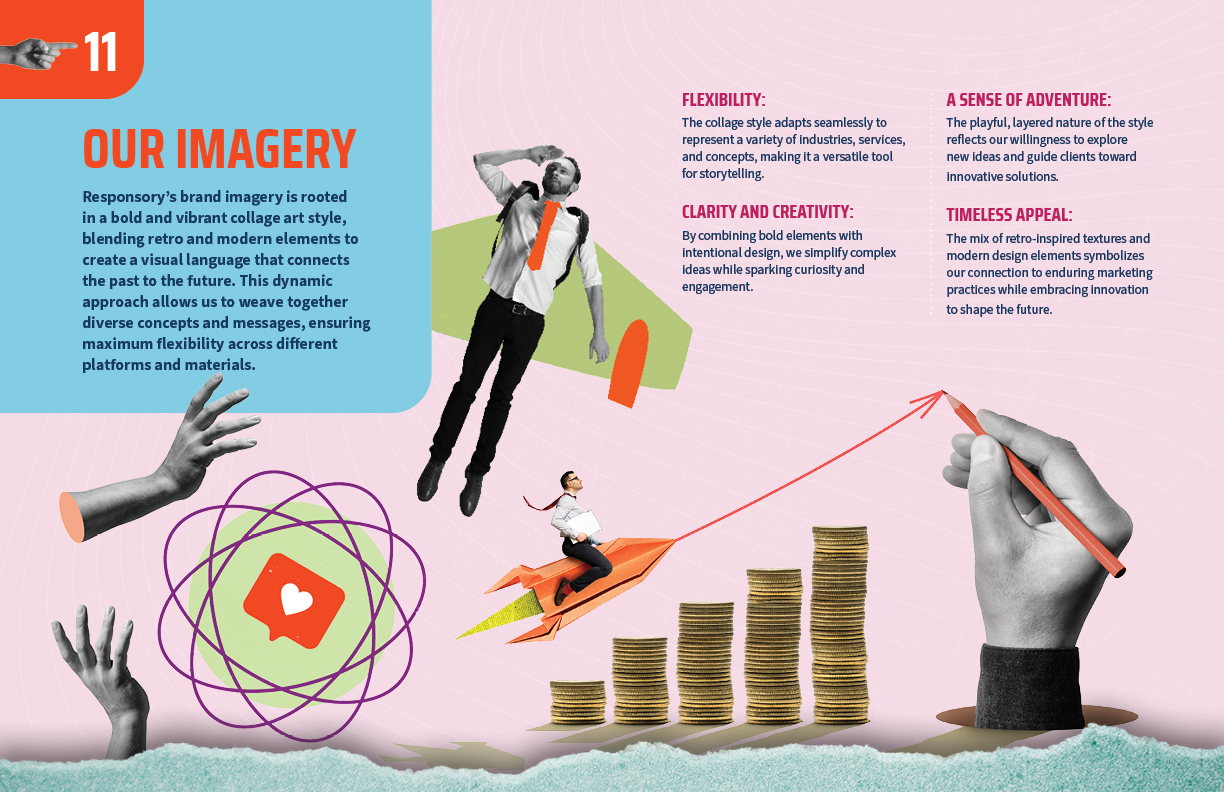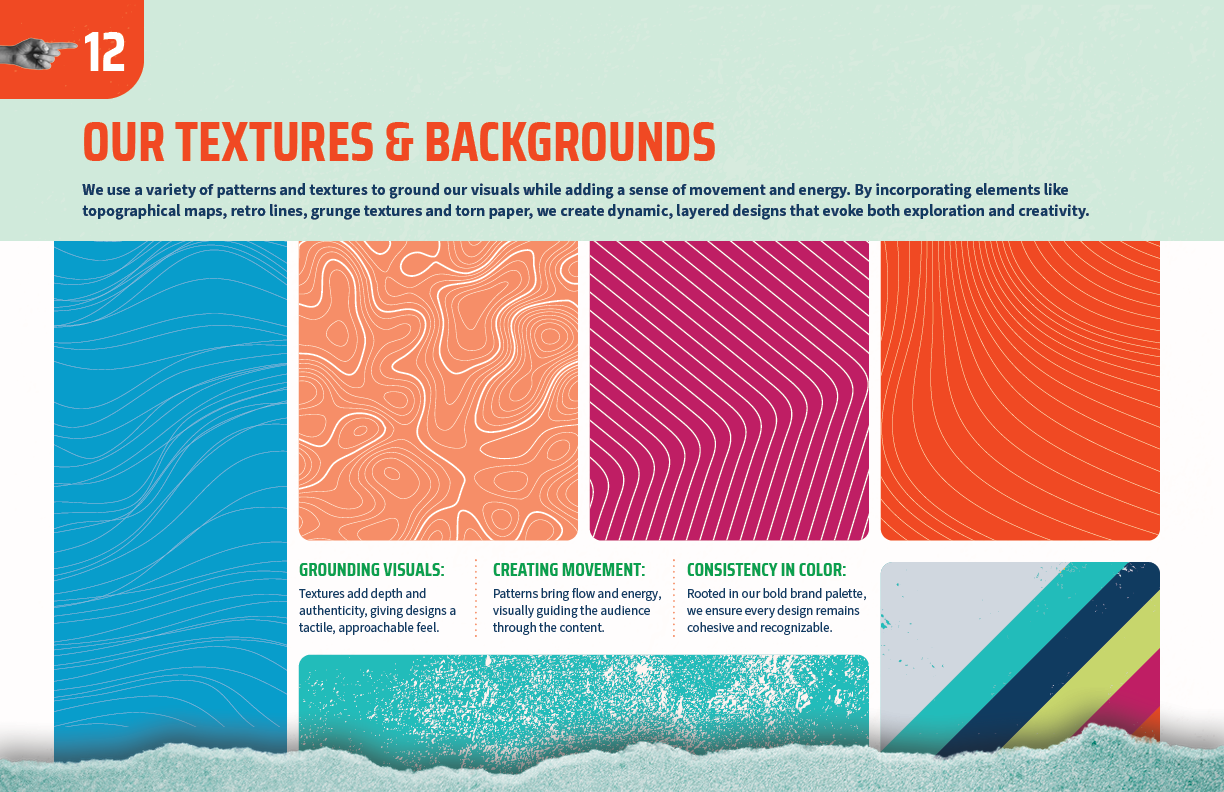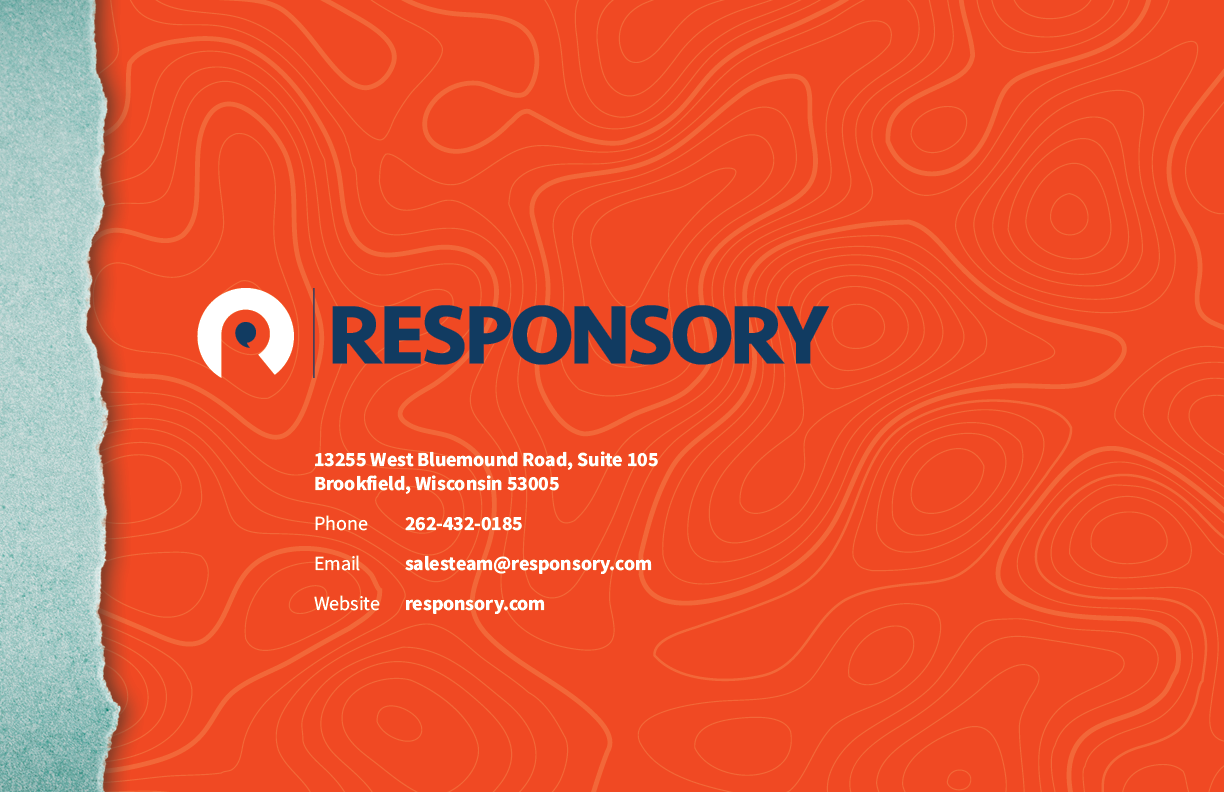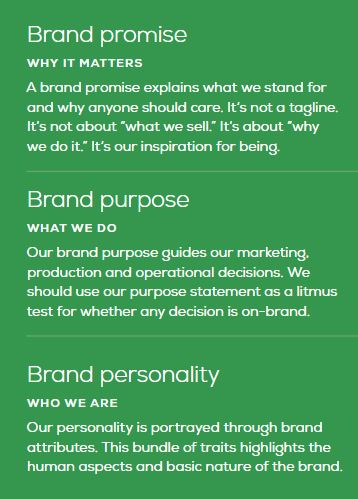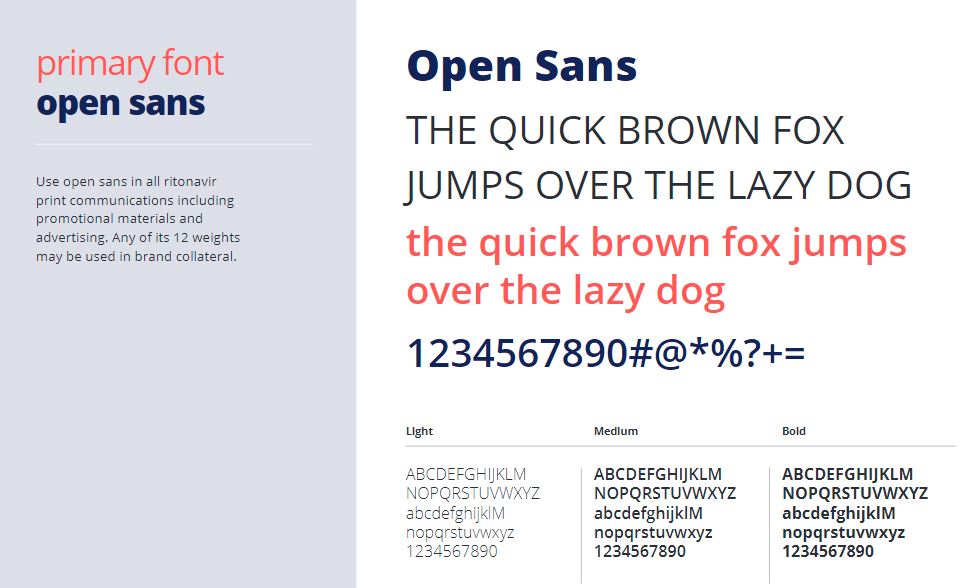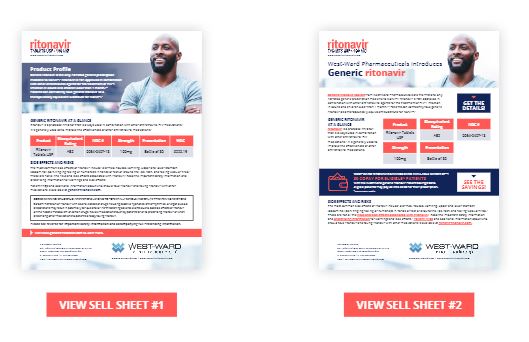Keep Your Brand on the Straight and Narrow: 15 Rules to Enforce for Consistency and Clarity
This blog is an updated version of our popular 2016 post, Brand Identity Policing: 13 Rules You Must Enforce. We’ve refreshed the content to reflect today’s best practices, ensuring you have the most current strategies to protect and elevate your brand across all platforms.
Calling all brand guardians! We have an APB on brand misuse and the biggest offenders might be closer than you think — your colleagues, leadership, partners and vendors. Without constant vigilance, even well-meaning collaborators can unintentionally compromise brand integrity. From off-brand logos in presentations to rogue color schemes in social posts, brand misuse is a real and ongoing threat.
Brand consistency isn’t just aesthetic; it builds trust, recognition and loyalty. Each customer interaction with your brand shapes their perception of who you are. Even minor inconsistencies can erode that perception, creating confusion and diminishing trust.
This is where brand standards come in. They’re the playbook for how your brand should look and communicate, covering essentials like logos, typography and color schemes. As digital platforms evolve, these standards now include multimedia, interactive elements and emerging technologies.
But standards alone aren’t enough. They need constant brand policing.
As a brand guardian, your role is to adapt standards to changing trends and ensure others do the same. To support you, we’ve compiled 15 essential branding rules for today’s digital age. From logo consistency to data privacy, these rules will keep your brand polished and professional across every platform.
1. Logo Usage Across Digital Platforms
Your logo is the cornerstone of your brand’s visual identity and often the first thing customers recognize. In today’s fast-paced, multi-platform world, logos can easily become distorted, off-color or misaligned.
Key Rules
Enforcement Tip
Create a central repository where team members and vendors can easily access approved logo files in all necessary formats and sizes. Include a quick “logo checklist” in your brand guidelines to reinforce dos and don’ts for each use case.
2. Color Palette Consistency
Even slight variations in color consistency across platforms, screen types and devices can make your brand feel fragmented, diluting its impact.
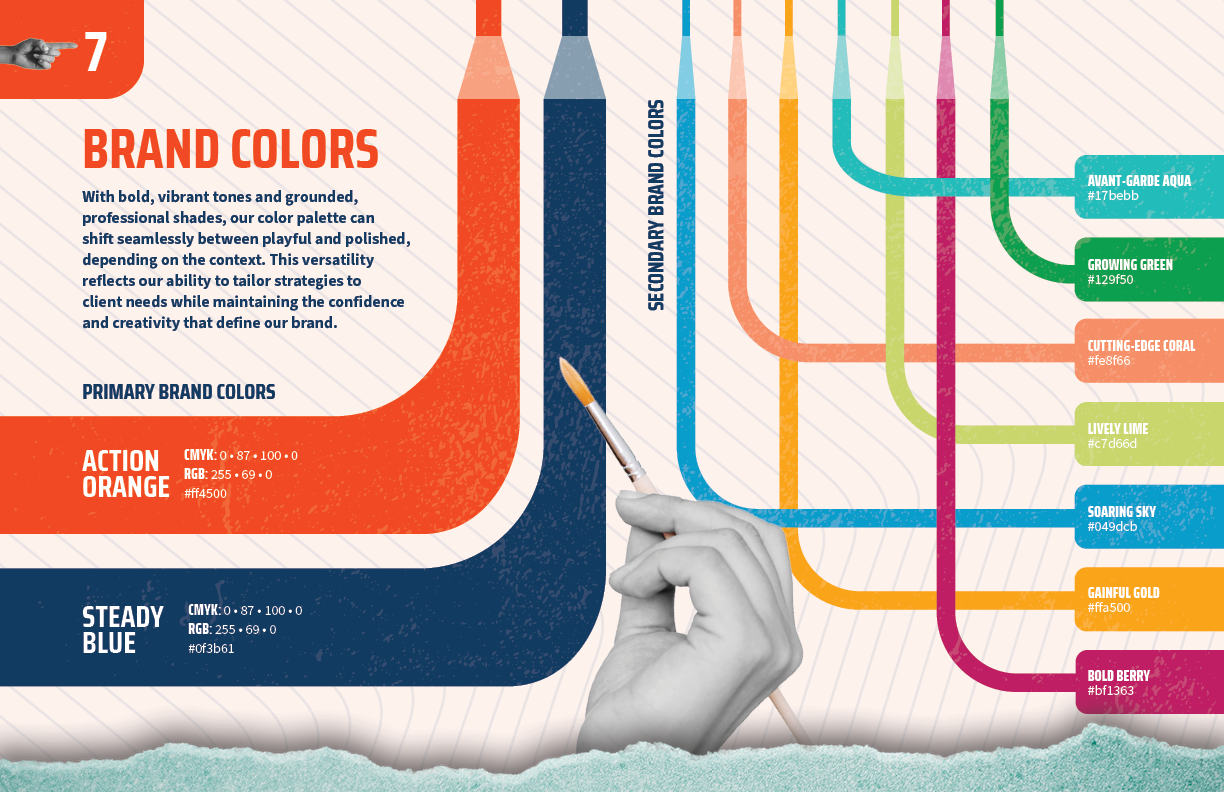
Our color palette can be professional or playful, depending on the context.
Key Rules
Enforcement Tip
Create a shared color palette resource with downloadable swatches in HEX, RGB and CMYK formats. Encourage your team and vendors to pull colors directly from these resources.
3. Font and Typography Rules
Typography and font play a vital role in shaping your brand’s identity, conveying personality in every communication.
Key Rules
Enforcement Tip
Create a typography guide that includes font names, sizes and usage examples and include direct access to licensed fonts where possible. Restrict access to font customization in design tools to avoid discrepancies.
4. Image Style and Quality Control
Images are a critical part of your brand’s visual identity. Ensuring that all images align with brand standards helps maintain a cohesive and professional look across all platforms.
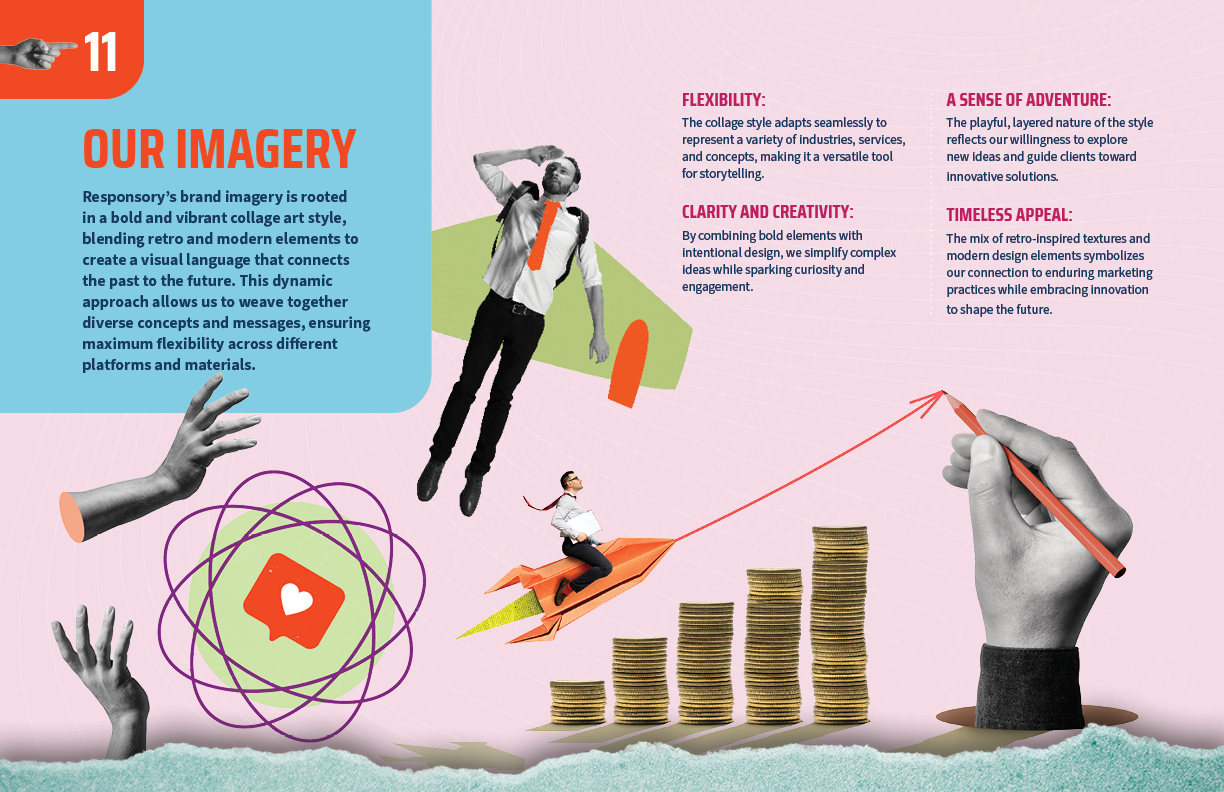
Our brand imagery mixes retro and modern elements to create a bold and vibrant visual language.
Key Rules
Enforcement Tip
Create a shared gallery of approved images and examples that reflect your brand style. Regularly review and adjust visual content across digital platforms for adherence to style and quality standards.
5. Video Style and Multimedia Standards
Videos and multimedia content are powerful tools for engaging audiences and showcasing your brand’s personality. Standardizing these elements ensures a professional, recognizable look that strengthens your brand.
Key Rules
Enforcement Tip
Create a video style guide covering visuals, sound and multimedia elements. Maintain a library of branded assets (e.g., intro animations, licensed music and approved color presets) that team members can access.
6. Interactive and Animation Guidelines
Interactive elements and animations can bring your brand to life, enhancing user engagement and creating memorable experiences. However, overuse or inconsistent application of these elements can distract users and weaken brand cohesion.
Key Rules
Enforcement Tip
Include examples of approved animations and interactive elements in your brand guidelines and give your team access to reusable assets like animated icons and templates.
7. Brand Voice and Tone
Voice is the consistent communication style that reflects your brand’s character, while tone adapts that voice to fit different contexts or emotions. Maintaining a consistent voice and tone across platforms is essential for creating a unified experience.
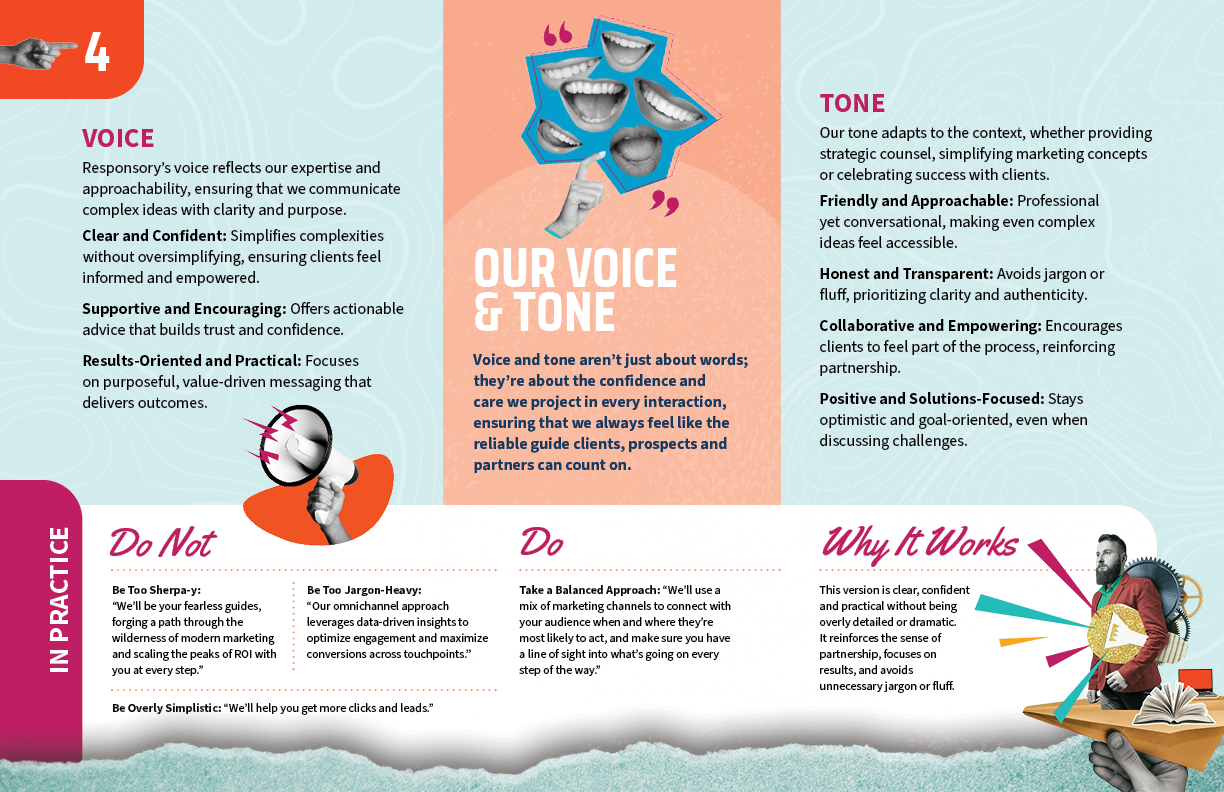
Our voice and tone ensures consistent communication that’s both confident and caring.
Key Rules
Enforcement Tip
Provide team members with a brand voice and tone guide that includes example phrases and “dos and don’ts” for various scenarios. Offer training sessions to help all communicators understand how to convey the brand’s personality across digital channels.
8. Messaging and Tagline Adherence
Consistent messaging and tagline use is essential for reinforcing your brand’s identity and value proposition, helping audiences instantly recognize and connect with your brand’s promise.
Key Rules
Enforcement Tip
Include taglines and core messaging examples in your brand guidelines and train team members and partners on brand messaging to keep everyone aligned.
9. SEO and Metadata Consistency
SEO and metadata play an important role in how your brand appears online, impacting both search engine rankings and user experience.
Key Rules
Enforcement Tip
Create an SEO and metadata checklist that includes title tags, meta descriptions, keywords, alt text and schema markup. Conduct regular audits to verify that all metadata aligns with your brand’s SEO strategy.
10. Content Accessibility Standards
Ensuring content accessibility creates an inclusive brand experience that reaches all audiences, including those with disabilities. Accessible content also improves usability and can positively impact SEO, making your brand more visible and user-friendly.
Key Rules
Enforcement Tip
Include accessibility checks in your content creation process and use tools to evaluate color contrast and screen reader compatibility.
11. Social Media Profile and Post Guidelines
Social media is a key touchpoint for your brand. Clear guidelines ensure that everything from profile images to hashtags aligns with your brand’s voice and look.
Key Rules
Enforcement Tip
Create a social media style guide covering profiles, post formats, hashtags and tagging rules. Provide templates and examples and regularly audit social channels to ensure all elements stay aligned with brand standards.
12. Affiliate and Influencer Guidelines
Collaborations with affiliates and influencers can amplify your brand’s reach, but they must represent your brand accurately.
Key Rules
Enforcement Tip
Regularly monitor affiliate and influencer content to ensure alignment with brand standards. Offer feedback and support to partners to help them represent your brand effectively.
13. AI Usage in Brand Content Creation
AI tools can be powerful assets for creating brand content quickly and efficiently. Establishing clear guidelines for AI usage helps ensure that all AI-generated content aligns with your brand’s voice, tone and quality standards.
Key Rules
Enforcement Tip
Regularly audit AI-generated content for brand alignment and provide training on using AI tools responsibly. Encourage human oversight on all AI content to maintain authenticity and quality.
14. Legal, Copyright and Usage Rights
Respecting legal, copyright and usage rights is essential for maintaining brand integrity and avoiding costly legal issues.
Key Rules
Enforcement Tip
Maintain a content library with licensed and approved assets and educate your team on proper copyright and attribution practices. Regularly audit content to ensure compliance with legal and copyright standards.
15. Data Privacy and Security in Brand Messaging
In today’s digital landscape, data privacy and security are top concerns for consumers. Communicating your brand’s commitment to protecting customer information is essential for building trust and credibility.
Key Rules
Enforcement Tip
Include data privacy and security messaging guidelines in your brand standards. Regularly review privacy-related communications for clarity and consistency.
Brand Consistency is Key
Brand policing is key to building a brand people recognize, trust and feel loyal to. By sticking to these 16 essential rules, you’re giving your brand the best shot at standing out in a crowded digital world.
But let’s be real — keeping everyone aligned with brand standards across platforms is no small task. It takes regular oversight and clear guidelines. That’s where we come in. Responsory is here to help you streamline the process, strengthen your brand standards and create a cohesive brand experience for your audiences.
Explore our branding services and contact the experts at Responsory today. Let’s work together to keep your brand looking strong, trusted and ready to shine across every platform.
In This Blog
More to Explore

About the Author
A prominent marketing strategist and nationally recognized thought leader, Grant A. Johnson is president and CEO of Responsory. He is a sought-after public speaker, direct marketing trainer, copywriter, award-winning author and the creator of Direct Branding℠, Responsory’s method for producing sure-fire measurable results.
More to Explore
Our New Brand Book
We’ve recently taken a deep dive into who we are as a brand — what we stand for, what we don’t, and where we’re headed. The result is this simple, clear brand book that distills our identity into its most essential elements. Flip through to see how we bring our brand to life and the subtle cues that reinforce our story at every touchpoint.
This blog was edited by Aimee Dierbeck and updated on September 23, 2025 to reflect the latest information and insights.


